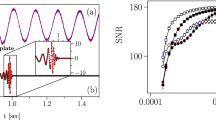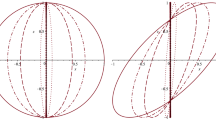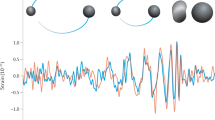Abstract
BECAUSE there has been no published support yet for Weber's detection of gravitational waves1, I venture to report an experiment at its early stages.
This is a preview of subscription content, access via your institution
Access options
Subscribe to this journal
Receive 51 print issues and online access
$199.00 per year
only $3.90 per issue
Buy this article
- Purchase on SpringerLink
- Instant access to full article PDF
Prices may be subject to local taxes which are calculated during checkout
Similar content being viewed by others
References
Weber, J., Nature, 228, 319 (1970).
Charman, W. N., et al., Nature, 228, 346 (1970).
Muller, P. M., and Sjögren, W. L., Phys. Today, 22, 46 (1969).
Kaufmann, W. J., Nature, 227, 157 (1970).
Weber, J., Phys. Rev. Lett., 22, 1320 (1969).
Weber, J., Phys. Rev. Lett., 25, 180 (1970).
Author information
Authors and Affiliations
Rights and permissions
About this article
Cite this article
ANDERSON, A. Physical Sciences: Probability of Long Period Gravitational Radiation. Nature 229, 547–548 (1971). https://doi.org/10.1038/229547a0
Received:
Issue date:
DOI: https://doi.org/10.1038/229547a0
This article is cited by
-
Gravitational waves and red shifts: A space experiment for testing relativistic gravity using multiple time-correlated radio signals
General Relativity and Gravitation (1983)
-
Effects of low-frequency gravitational waves upon orbital elements
Lettere Al Nuovo Cimento Series 2 (1976)
-
Detection of Long Period Gravitational Radiation
Nature Physical Science (1971)



